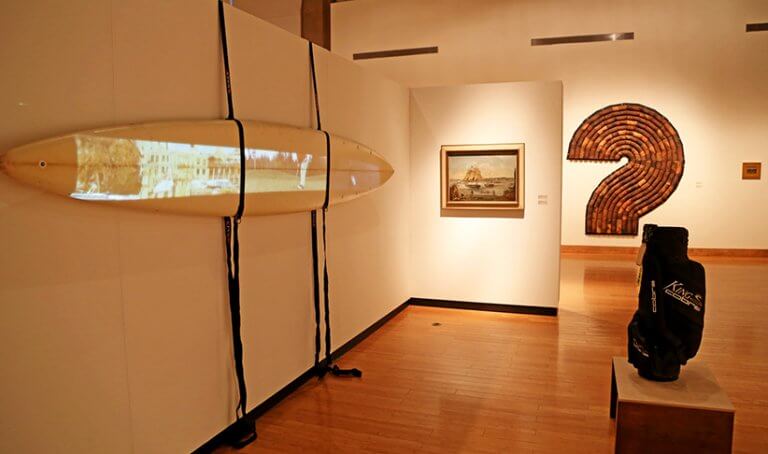
Dialogues

This exhibition is based on the premise that artworks are built on conversation, that they are not only in continuous discussion with other works, but contain dialogues inside themselves. This runs counter to the conventional image of creation born of isolation and interiority, and of the artwork as a unified, harmonious message. Following this notion of the “conversation piece,” we have combined some recent acquisitions with earlier ones to generate and reveal a variety of new visual exchanges and encounters both within and between works. Rather than fit artworks into a chronological or thematic framework, we have juxtaposed them in ways that suggest relationships—whether of affinity or tension—across temporal, material, spatial and stylistic divides.
Several works in Dialogues incorporate internal conversations, ranging from John Greer’s and Jocelyn Alloucherie’s navigation of the relationship between image, object and idea, to the juxtaposition of material history and narrative cycle in Jinny Yu’s Tiepolo Project, in which figural painting and abstraction converse across 22 aluminum panels based on a Tiepolo mural. Claude Tousignant’s two-panel Ultra Cadmium exemplifies a reduction to the most elemental bifurcation, based as it is on pure optical relationships between colours. William Kurelek’s I Triumphed and I Saddened with All Weather reminds us of the work’s dependence on conversation with another actor, the viewer; two different actors, ignorant of one another, experience a natural phenomenon in opposite ways. Only the viewer is aware of both positions.
Dialogues focuses on a multiplicity of suggestive groupings that aim to broaden definitions and interpretations. The relationship between processes is manifested in contrasting ways in Robert Harris’s figural studies and the architectural “sketches” executed in metal by Steve Higgins. Works by Micah Lexier, Shirley Wiitasalo and Jack Sures represent a variety of approaches to the notion of art as a communicative sign. One of the singular properties of the visual artwork is its ability to present different realities simultaneously, and to propose the work as a site of exchange. George Thresher’s Harbour Entrance, Halifaxpresents an early 19th century encounter between different worlds, in this case a Mi’kmaq encampment and English settlement, mediated by sailing ships. Adjacent to this painting is a video installation by John Boehme that juxtaposes performance and location, movement and site. What is usually seen as static is explicitly revealed, through dialogues, as constantly in motion. In three conversations (between open water and a golf course; between nomadic and settled; between contemporary and historical) the artist shows how even the status of the solid ground beneath us is dependent on dialogue.
-Kevin Rice and Pan Wendt, Curators

